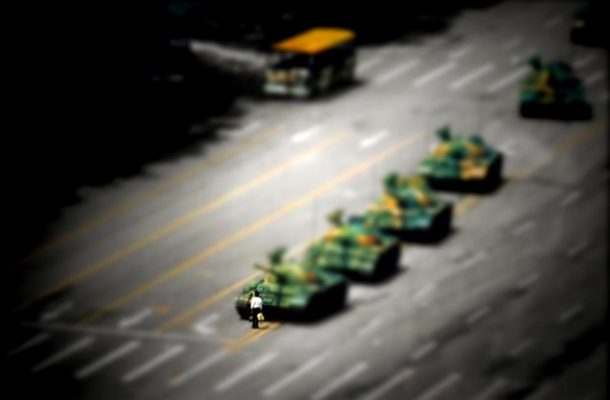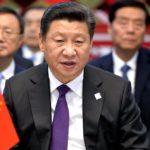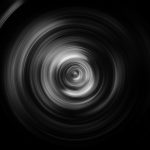Tiananmen Square, 3–4 June 1989

We live in an era that lionises a love of beginnings. It is what the media—and through it, imagination—strive for. But discovery, no matter how novel, is never original. It draws on the past. The challenge for the writer is to acknowledge that his or her story is rebuilt from the perspective of the present.
This is what Sigmund Freud called ‘afterwardness’, memory as reprinted in accordance with later experience. It’s what I have wrestled with in trying to convey the events that took place in the heart of China 30 years ago.
I was there on the sweltering night of 3 June 1989 when scores of Type 59 tanks rolled through Beijing crushing residents. People standing on street corners were torn apart by tracer bullets, run over or clubbed to death. It was a slow, deadly procession that began after dark and finished at dawn.
The bodies fell in laneways and houses, beside shops and offices, and finally, in a huge ceremonial space six times the size of the Melbourne Cricket Ground. This was Tiananmen Square and it soaked up most of the blood. Standing on the apron of the square, beside the vermillion walls of the Forbidden City, and later next to the Great Hall of the People, I watched it unfold. It was life and death in three-quarter time.
The military precision of troops as they encircled student protesters seemed choreographed in the humid air. I was mesmerised and bewildered: would the PLA, the People’s Liberation Army, protect the people, or would it slaughter them in front of Western media and mortified onlookers?
It is a long time ago, but in another way, it is ever present. Such were the scale and brutality of the crime that we keep coming back to it. At least, those of us with a memory do. For most of China, the massacre never happened.
The government denies it occurred, and those with knowledge of the event remain silent on threat of jail or torture. Or they did. Recently, as reported in the New York Times, a former soldier has broken ranks and spoken of that night.
Jiang Lin, 66, was a lieutenant in the PLA with a firsthand view of the massacre. She says the brutality she saw was like watching her mother being raped. Speaking up last week to call for a public reckoning, she wondered how fate could suddenly turn so that tanks and machine guns were used against ordinary people. ‘To me, it was madness … If you can deny that people were killed, any lie is possible.’
Jiang’s account tallies with what I wrote about the night when at around 10 pm I heard faint rumblings and dull retorts, like a car backfiring. Along the Avenue of Eternal Peace, old men, women, students and children shored up barricades of bins as flashes of tracer fire shadowed them.
Even with the dim street lighting, I could see soldiers in battle gear firing. The noise was deafening. I heard the thud of people being hit before I saw them fall. One youth was squashed into the bitumen; his organs fanned out around him. The grotesque remains of his body were dwarfed by the bulk of the tanks, each with guns swivelling beneath a red star.
People rubbed their eyes and held cotton masks to their faces. They recoiled and then regrouped. And then came the crashing sound of an armoured personnel carrier that had separated from the main force as it careered over road dividers, its tractor wheels tangled in concrete and metal.
A young man lobbed a burning petrol bottle, which forced open the carrier’s metal canopy. A young soldier leapt out, only to be set upon by the crowd. When a student wearing a democracy headband tried to shield the soldier he was shoved aside. Two more soldiers emerged and were beaten to death.
I turned and ran back to the top of Tiananmen Square, where troops and tanks were beginning to encircle the remaining protesters. Students had been here seven weeks, and had erected tents, stalls and loudspeakers. There was a young girl with a long plait waving her arms and talking loudly. I couldn’t make out what she was saying, but I saw her shudder and then her limbs fly out from her body.
Her classmates, their hair lifted by a light breeze, grabbed her and stumbled towards a Red Cross tent. She was laid in a line of bodies. Through it all, loudspeakers repeating the martial law declaration competed with the sobs and screams of those trapped in the square.
By 2 am, hundreds were dead. The troops and tanks had massed on the northern apron and prepared to roll over the tent city of 3,000 unarmed student protesters and half a dozen hunger strikers. The soldiers kept firing, hitting those standing even far away from the square. I heard student leaders urging their followers to flee. Many walked out singing the national anthem; others were murdered.
The students had been waiting for this; so had the foreign media. But while it was a grand finale bestowing a kind of appalling recognition for the students, it was something else for us. We were not participants but to cover the story we had become players. At dawn, as I sat staring at the telex machine that would transmit my story, I wondered how I was going to write about what had happened.
In fact, I wasn’t as certain as some of the sentences I wrote. I’m not talking about facts in the sense of what can be known. The death toll, for instance, is a number. No one could be sure about it, but only because the army refused to reveal how many bodies it scooped up with the blood it scrubbed from the square. I put the figure at 3,000—the estimate of the Red Cross—rather than the 300 claimed by the government.
What troubled me was what can’t be known but can be explored. Because journalists tend to see themselves as in the know, rather than just plain curious, this can be hard to find. Is it because journalism encourages accounts that simulate reality rather than interrogate it? If so, this disguises the disjointed nature of what we witness. Rough seams are smoothed out.
My account of the massacre aspired to be eyewitness history without understanding enough about the subject who does the witnessing. I didn’t rely exclusively on journalism’s formula—but I leant heavily on it and that let the account down.
But not completely. While a better starting point would have been to acknowledge that language always begins from speechlessness, and that all stories are in part subjective, it is instructive, all these years later, to have the tragic intent of that night confirmed by a real participant.
Former soldier Jiang Lin has proved braver than anyone at the helm of China today. By confirming, as suspected, that some PLA generals opposed the massacre, but were compelled to it by China’s geriatric despots, she has shone a light on who pulled the trigger.
If there’s any doubt about the currency of the lessons from Tiananmen for the Chinese people and the governments that engage with the party and the PLA, hearing China’s defence minister, General Wei Fenghe, speak at yesterday’s Shangri-La Dialogue in Singapore should remove them.
On Tiananmen, he said, ‘How can we say China didn’t handle the Tiananmen incident properly? That incident was political turbulence and the central government took measures to stop the turbulence which is a correct policy.’
Sadly, despite all the progress in the Middle Kingdom, not much has changed.
This article was published by The Strategist.
Peter Ellingsen was The Age’s correspondent in Beijing in 1989. He has a PhD in psychological medicine from Monash University and is now a psychoanalyst in private practice in Melbourne.













